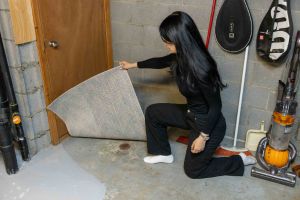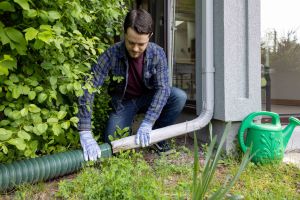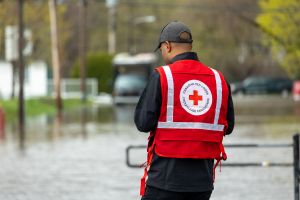Follow our step-by-step guide on how to prepare before a flood, what to do during a flood, and what to do after a flood. Access free emergency plan and emergency kit resources.
How to Prepare Before a Flood
Floods can happen any time of the year, which is why it’s important to monitor the risk of floods in your area. Local weather information can be found on trusted weather apps like the Weather Network.Create an Emergency Plan for your Household
During emergencies, situations can escalate in a moment's notice, and we may have to react quickly. Creating an emergency plan is important not only for floods, but for any emergency.Download our comprehensive emergency plan template, available for free in 12 languages.
Take time to thoroughly fill out the plan, ensuring to include key information like health card numbers, passports numbers, insurance information, emergency contact details, and household meet-up point information.
If you have children, it’s important to fill out the school emergency section, and consider keeping a list of emergency contacts you have provided to the school, in case you need to contact them for assistance in picking up your children from school.
The Canadian Red Cross recommends reviewing, updating, and practicing your emergency plan frequently (at least once a year). We also recommend printing a physical copy and store it in your emergency kit, a copy in your vehicle, and a digital copy available on your smartphone or tablet.
Put Together an Emergency Kit

Putting together an emergency kit may seem expensive, but it doesn’t have to be.
During an emergency, you may have to evacuate your home due to unsafe conditions. In these situations, you may only have a few minutes to grab what you need and leave. By preparing ahead of time, you will be able to rest assured you have the basics.
The Canadian Red Cross recommends having an emergency kit in your home that has essential supplies to meet your households' needs for at least three days. In remote, rural or Northern communities, it’s best to have additional supplies that can last beyond three days, if possible.
Download our free emergency kit checklist to help you get started on putting together an emergency kit. You can also buy Canadian Red Cross emergency kits online.
Some essential items you should have in your emergency kit include:
- Water
- Non-perishable food and a can opener
- Important medications, prescriptions, baby needs, pet needs
- Copies of your emergency plan
- Important family documents (copies of passports, insurance, licenses, wills, health cards, etc.).
- Cell phone charger or battery pack
Check the Floor Drains and Eavestroughs of Your Home
It’s important to check if your home has floor drains and where they are located to ensure they are not covered by anything like boxes, or carpet. Floor drains help manage excess rainwater and prevent water damage from the foundation and basement of your home.
Credit: John Falcon / Canadian Red Cross
Check your floor drains to ensure they are clear from debris like ice, leaves or garbage. Similarly, you should check your homes eavestroughs and clear any debris that may be blocking them.

Credit: John Falcon / Canadian Red Cross
What to do During a Flood
If there’s an active flood or flood warning in your area, be sure to stay up to date by listening to local radio, watch local news channels, and follow local municipal social media accounts or website for regular updates.Your household should be ready to evacuate at a moment's notice, ensuring to grab a copy of your emergency plan and emergency kit. If a flood or a flash flood warning is issued in your area, head to higher ground and stay put.
Avoid walking or driving through flood water as it could be much deeper than you think, especially at night when it is more difficult to recognize flood danger. Always keep children and pets away from flood water.
What to do After a Flood
After a flood, you should continue to monitor local weather updates and directions from local municipalities and local community leaders. If you have evacuated your home, return only when advised by local authorities that it is safe to do so.
Credit: John Falcon / Canadian Red Cross
At this point, you should notify your insurance company of any damages to your home. They will need a record of damage to your home and belonging and may request photos or videos.
When returning to your home after a flood, wear protective clothing including rubber boot, safety glasses, rubber gloves, and a dust mask. During flood cleanup, minimize contact with floodwater, or anything that may have come in contact with floodwater. Food items that have been exposes to flood water should be thrown away.
It’s important to take extreme caution of home appliances after a flood. Do not use any appliances, heating, pressure, or sewage system until all electrical components are dry and have been inspected by a qualified electrician.
If any appliances or large items have been damaged in your home, contact your local authorities or community leaders to provide guidance on how to properly dispose of damaged items in your home.
Free Emergency Preparedness Tips and Resources
By following this guide, you should confidently know what to do before, during, and after a flood. Remember, keep up to date on the latest weather alerts in your area and have an emergency plan and an emergency kit readily available in your household.To learn more tips and access free emergency preparedness resources, visit our Be Ready: Emergency Preparedness and Recovery page.

